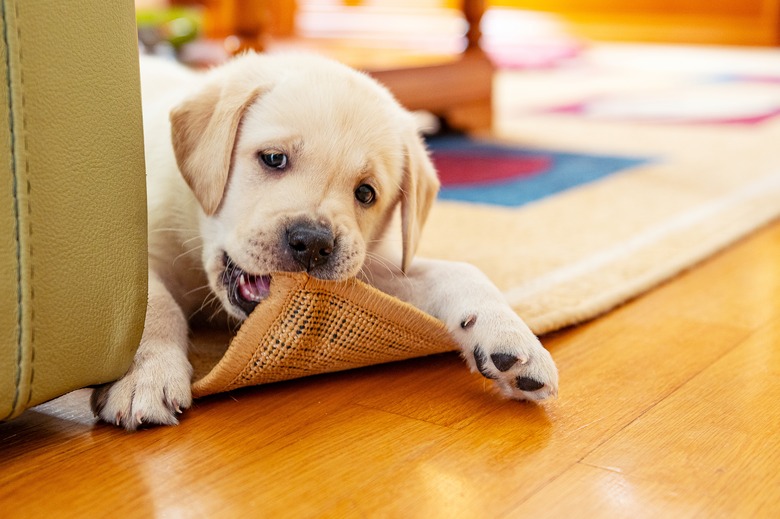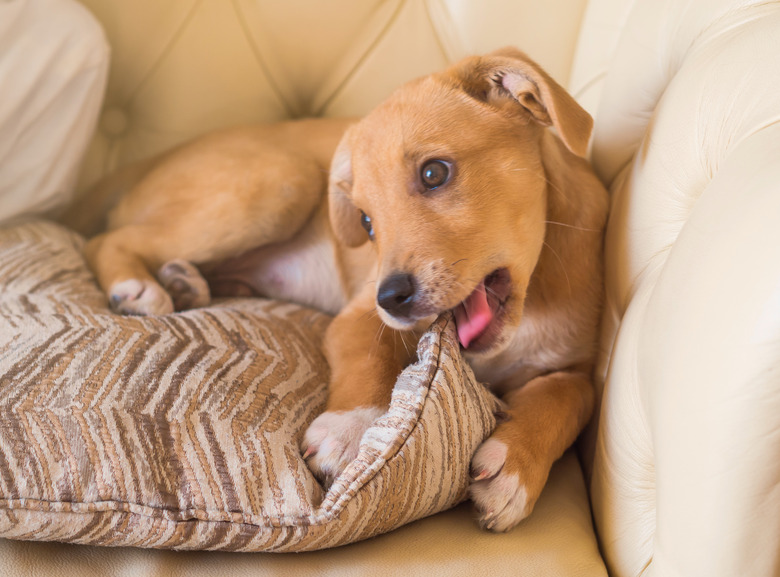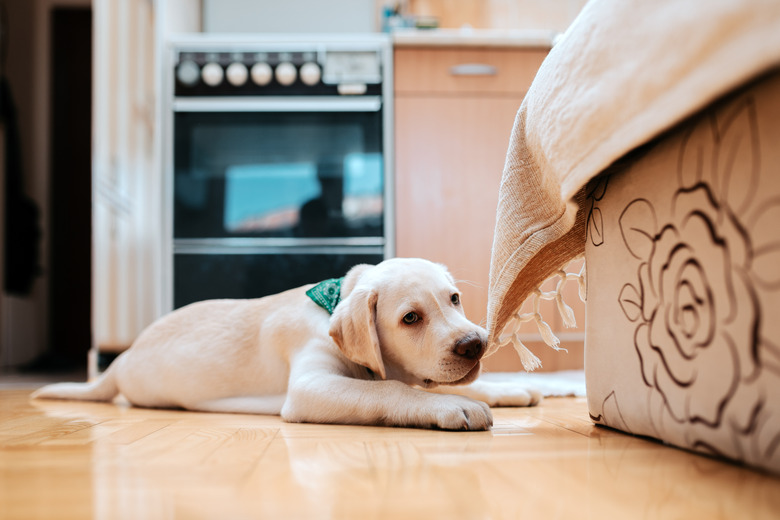How To Prevent A Dog From Chewing On Furniture
The arm of your sofa has little protection from an enthusiastic pup with a fervor for chewing. Dogs aren't terribly picky when it comes to inappropriate chewing. It's not unlikely that more than a few possessions have been lost to the choppers of the family dog. Destructive chewing can be damaging to any household items, especially furniture, but proper training and conditioning can prolong the life expectancy of your favorite arm chair.
Understanding dog chewing
Understanding dog chewing
Dogs have an innate need to chew, according to the ASPCA. Dogs chew to improve the strength of their jaw and to clean their teeth. Puppies will chew to alleviate the pain associated with teething. Your dog may become a chewer if he is bored, if he's seeking food because his caloric intake has been reduced, and if he's experiencing anxiety.
Separation anxiety may cause your dog to seek something to chew while you're away, explains The Humane Society. Your dog won't know what is ok to chew on and which are inappropriate items, so make sure you're clear about what the appropriate items are when you begin training.
If the reason your puppy is a chewer is because they are teething, consider a frozen toy or other teething dog chews to help sooth the gum pain. Puppies simply don't know what they can or can't chew on, so if your puppy can reach the remote control they will chew on it. Young dogs have to learn what is ok to chew on. Never provide inappropriate items to chew on during playtime, even if it's cute, because it will simply confuse them.
Provide good chew toys
Provide good chew toys
Never offer an old shoe, garment, or pillow for your dog to chew. He cannot differentiate between the "good dog" chews and the "destructive behavior" chews. Instead, give him his own chew toys, and consider a food-stuffed toy like a Kong to keep him busy for a long period of time. Kongs are durable rubber toys that can be filled with kibble or treats like peanut butter and they can keep a dog or puppy chewing for a long time as they lick and chew to get it out.
If your dog has a propensity for destructive chewing, don't allow him out of sight. Spend time with him engaged in play and make sure he gets enough physical exercise and mental stimulation to keep him busy. If you catch him in the act, use a vocal command such as "no chewing," or "uh oh," and immediately give him his own toys. Praise him when he's chewing his dog toys, and offer him a treat to reinforce the positive act of chewing something other than the couch.
Why pets chew furniture
Why pets chew furniture
Chewing behavior is a natural instinct and urge in dogs, so you can't expect to stop your dog's chewing habits completely. In the wild, gnawing on sticks fulfill a dog's need to chew. In your living room, your dog may chew the leg of a table, the leg of your couch, or the arm of your favorite recliner. The wood table leg may fulfill his ancestral need to chew wood found in the wild, and sucking the fabric from an arm chair may mimic the comfort your dog felt nursing as a young pup.
This may become a real issue if your dog was weaned too young. Consider talking with your vet about the benefit of seeing a dog behaviorist if your dog begins sucking the fabric parts of your furnishings. Chewing wood may lead to splinters in your dog's gums, and if he's tearing apart the arms or cushions of couches or chairs, he could ingest fabric or batting, which could lead to intestinal distress or be a choking hazard.
Using bitter taste deterrents
Using bitter taste deterrents
Liquid deterrents, commonly referred to as "bitters," may cause your dog to redirect their behavior before they start to chew your couch. Sprays with a bitter apple scent simply don't taste good, so most dogs want to avoid them. Bitter sprays shouldn't be used in place of good training, but can supplement your training efforts. Spray the taste deterrent onto a small piece of washcloth and allow your dog to take it into his mouth.
He should spit it out immediately. If he doesn't, it's unlikely spraying the furniture will be much of a deterrent. If he does spit out the cotton, spray the furnishings liberally, but you may want to test the bitters first in an area that cannot be seen, such as the back of the couch, to make sure the spray won't damage your fabric. Provide items for appropriate chewing like antlers, durable rubber toys, or rawhides.


